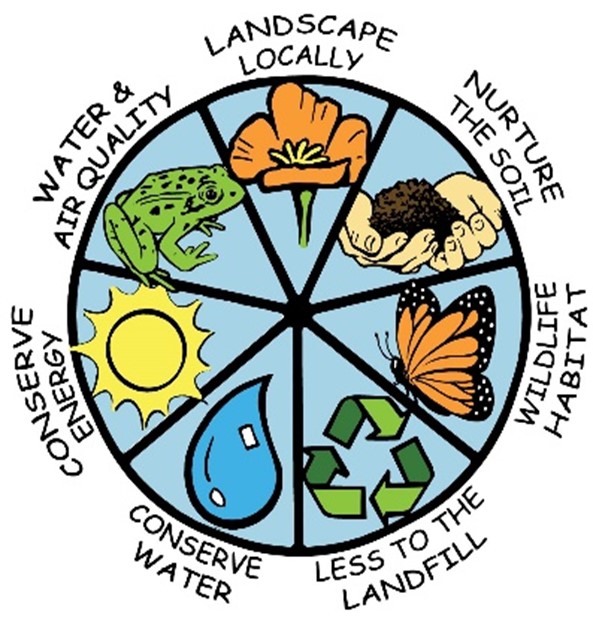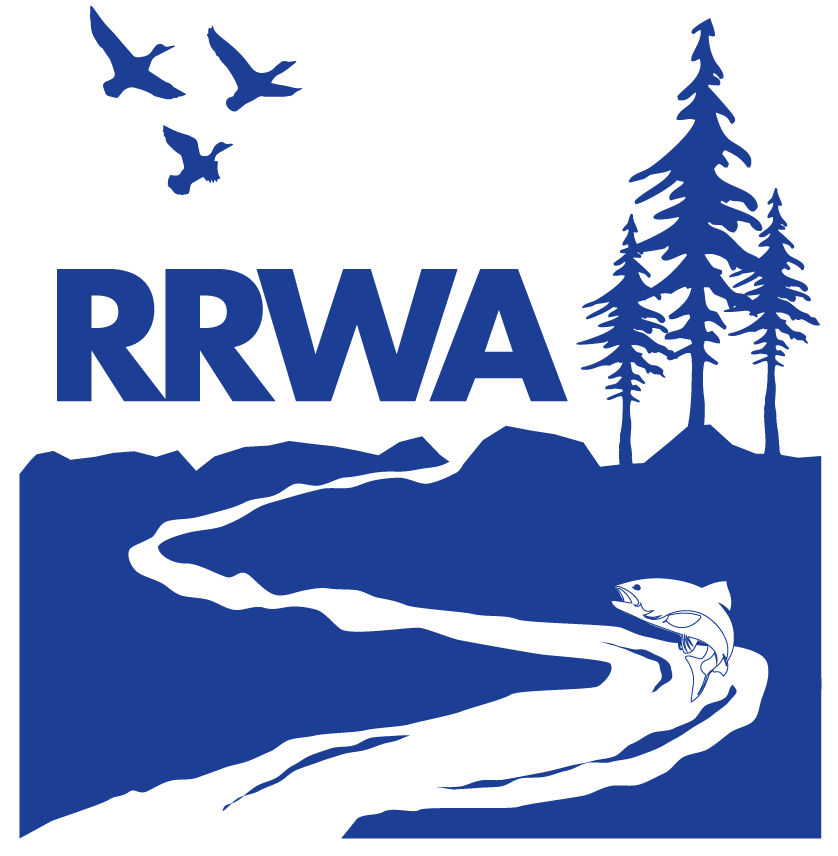Russian River-Friendly Landscaping Practices for Watershed Health
Gardening and landscaping allow us to beautify our properties and give us something fun to do on weekends, but it can also help improve the watershed ecosystem we live in. Russian River-Friendly Landscaping, a set of guidelines developed by the Russian River Watershed Association (RRWA), is a systematic approach to designing, constructing, and maintaining landscapes based on basic principles of natural systems. When we incorporate these guidelines into our landscaping, there are multiple benefits: we protect and conserve our local waterways by reducing plant debris and pesticide use, decreasing runoff by allowing more water to infiltrate into the soil, and more Working to mimic natural systems can support the integrity of one of California’s richest and most diverse ecosystems: the Russian River Watershed. When we set out to plan our garden or open space, we create an opportunity to become a steward of the Russian River Watershed and our community ecosystems.
Soil
Did you know soil stores roughly twice as much carbon as the atmosphere?
Healthy soil is established by planting native perennial plants, or plants that live longer than 2 years, that can establish deep roots. Tilling the soil less allows microbes (bugs) and mycorrhizae (symbiotic fungi) to remain intact and give plant roots access to more nutrients. Healthy soil creates an excellent ecosystem for an entire food chain of bacteria, nematodes, insects and worms that protect plants, neutralize pollutants and move water through the soil. When plants convert sunlight into food, they also move carbon dioxide in the atmosphere into the soil. When carbon is taken out of the air and stored in soil, also known as ‘carbon sequestration,’ the carbon remains locked in the soil below. This approach to gardening increases the soil’s health and sustainability and supports the relationship between organisms and their environment – both above and below the ground.
Natives
When you incorporate plants native to the region and compatible with the climate into your gardening and landscaping, it helps to establish a diverse and strong local ecosystem that improves the sustainability of our watershed. Native plants are generally more drought and fire resistant than non-native species, grow deeper roots since they do not need to be replanted annually, and require minimal tilling. They generally need less water because they evolved in Mediterranean climate of the Russian River watershed, which fluctuates between dry summers and rainy winters. Native species can also be more resistant to local pests, requiring fewer to no fertilizers, and need to be maintained less frequently.
Curious about native plants that are local? A great tool to help you get started is the California Native Plant Society: https://www.cnps.org/gardening
A particularly important characteristic of landscaping with California native plants are their ability to contribute to the defensible space of your home garden. Some plant communities are more fire-resistant than others. For example, chaparral is highly prone to fire. It is best to avoid plants that are native to chaparral, such as chemise and ceanothus. Instead, choose flowering herbaceous perennials over woody trees and shrubs. Groundcover – such as coyote brush can slow down the pace of fire, and the deep roots of the Toyon shrub supports slope stability, helping to prevent mudslides after a fire.
Check out a few specific examples of Russian River watershed-friendly plants below! California natives are noted with a poppy symbol.

For more assistance selecting Russian River-Friendly Plants, download our full flyer at https://www.rrwatershed.org/project/rrflg
Implementing these landscaping practices will allow your garden and landscaping to mimic natural processes and encourage your garden to imitate the ecosystems that have evolved in the Russian River Watershed for thousands of years. Russian River-Friendly Landscaping and Carbon Gardening can transform your yard into a beautiful and thriving ecosystem that contributes to a healthy Russian River Watershed ecology. Enjoy this season of planting by designing your garden to support the health of our creeks and river while sustaining soil health now and into the future!
If you are interested in learning more about the RRFL Guidelines, check out the full guide here. For more information about Carbon Gardening, check out our YouTube page here.



